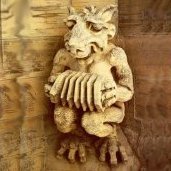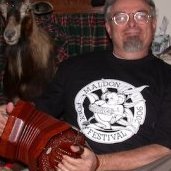-
Posts
1,158 -
Joined
-
Last visited
Contact Methods
-
Website URL
http://michaeleskin.com
Profile Information
-
Gender
Male
-
Interests
Traditional Irish Music
Anglo Concertina
Uilleann Pipes
Astronomy -
Location
San Diego, CA
Recent Profile Visitors
3,844 profile views
Michael Eskin's Achievements

Heavyweight Boxer (5/6)
-
Zoom Webinar 8/17/2024 preview on converting existing PDF tunebooks to ABC using PlayScore 2 to add interactive features. The Webinar will be at 8:00 AM Pacific time on Saturday, August 17th, 2024. Zoom link: https://michaeleskin.com/zoom Older style Zoom links: https://us04web.zoom.us/j/6193681854?pwd=eXd3L2ZEeWNnMDBZYVI0RkJ2c3Vudz09 Meeting ID: 6193681854 Password: session Preview video:
-

Pinky and Alternative Fingering
Michael Eskin replied to Lakeland Fiddler's topic in Teaching and Learning
Depends if you are playing in the traditional Irish style or in the Harmonic style. I play exclusively in the traditional Irish style and my suggestion is based on that. In the traditional Irish style, the low notes for the melody start on the left side and then some of the higher notes are on the right, but most of the first octave playing with the exception of the B above middle-C is played on the left side of the instrument. Chords and octaves are added, but in that same range or using lower octave notes on the left side along with the melody notes, often also on the left side. For the Harmonic style, as I understand it, the melody is played on the right side and the chords on the left. The two styles are very different. Since you gave an example of an common polka in the Irish repertoire, I assumed you were playing in the traditional Irish style, not Harmonic. -

Pinky and Alternative Fingering
Michael Eskin replied to Lakeland Fiddler's topic in Teaching and Learning
I'm confused, the pitches I showed are the pitches of the tune. Were you playing it up an entire octave? -
I picked up a new pair of the Loop Engage 2 earplugs and found them very useful at my session. I was able to both hear the other players as well as myself quite clearly, albeit at a reduced volume and the overall background noise from the pub was quite nicely reduced. I found the Experience model had too much attenuation for sessions unless I very loosely seated them in my ears. They're great for loud concert venues, had a chance to try them out at a county fair rock band performance last weekend.
-

Pinky and Alternative Fingering
Michael Eskin replied to Lakeland Fiddler's topic in Teaching and Learning
Assuming you are on a C/G instrument, you can play that G on a press the bottom row index finger, first button. The tablature system is described at: https://michaeleskin.com/abctools/userguide.html#reading_the_concertina_tablature -

Push pull change while on the same button
Michael Eskin replied to latzenpratz's topic in Teaching and Learning
Ah, cool. Yes, my comment was specific to jig articulation in traditional Irish music. -

Push pull change while on the same button
Michael Eskin replied to latzenpratz's topic in Teaching and Learning
"But clipping the first note of the triplet short is how you communicate the pulse of a jig. " I have to disagree, generally to convey the pulse of a jig you lengthen the first note, shorten the second note with a bit of separation from the third notes, and the third note is more or less full value. We had a workshop with Mary Bergin here in San Diego a couple of weeks ago where she spent two hours teaching mostly new whistle players how to play jigs with the proper articulation, timing, and swing, so this isn't just my opinion on the matter, this is exactly how she describes the jig rhythm. -
Yes, you are often partially opening the air button while playing to set the bellows exactly where you need them to be, both on the press and draw. Since you only been playing for two weeks I wouldn't worry too much about it yet. Eventually, as you have more tunes under your belt, you can experiment with playing entire tunes while having the air button partially or completely open. That will help you learn what's required as far as compensating bellows speed to maintain sufficient airflow for the reeds.
-

Exercises for cross line playing?
Michael Eskin replied to Cathasach's topic in Teaching and Learning
If you’re interested, my ABC Transcription Tools can generate cross-row fingering tablature for both Jeffries and Wheatstone-style instruments for any tune in ABC format. The tools are at: https://michaeleskin.com/abc Full details on Anglo Concertina tablature creation here: https://michaeleskin.com/abctools/userguide.html#tab_concertina -
Zoom webinar with detailed information and demonstrations of offline use of the tool as well as offline playback from interactive exported PDF tunebooks using browser redirection extensions. After the webinar, DaveRo pointed out that Chrome on Android does not support extensions, but Redirector for Firefox works on Android Firefox. Other Android browsers that aren't Google Chrome but still Chromium based, like the Samsung browser, on non-Samsung devices also supports extensions. I would suggest Firefox on Android as your best bet for a solid redirector based on DaveRo's experience.
-
Moved all of these operations to their own "☰" dropdown on the far right of the top buttons: Toggle Top/Bottom Toolbars Maximize Editor Align Bars (One Tune) Align Bars (All Tunes) Settings Advanced Settings
-
Thanks for letting me know!
-
Yes, I was having a bit of trouble with my hosting service talking to my FTP program. You must have tried right as that happened, lasted about 10 minutes. All should be fine now. If you have any issues, do a hard refresh of the page: https://filecamp.com/support/problem-solving/hard-refresh/
-
Note: As of 20 July 2024 - this has all moved to a new “☰” hamburger menu button on the far right of the top button bar. You can now automatically align the barlines in your ABC text for easier readability Demo video:
-
The database loading templates are available in the tool on the Add dialog for the offline enabled version. They are labeled: Add Offline Notes Database Loader Templates That being said, instead, I suggest getting familiar with the notes database management tools on the Settings dialog. They allow you to load all the notes for any instrument you've previously used in the player. Full details here: https://michaeleskin.com/app/userguide.html#app and https://michaeleskin.com/app/userguide.html#manage_databases








